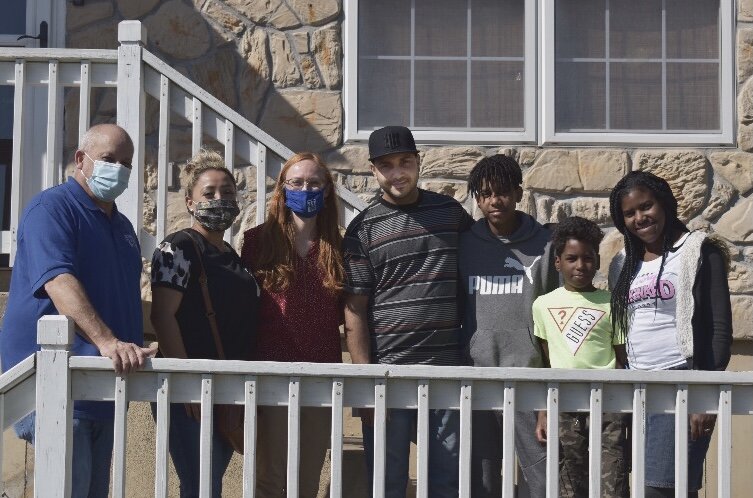Celebrating a Milestone: Asset-Development Accounts Eclipse $500,000!
February 4, 2022 | By: Doug Cowan, CSL President & CEO
On March 17, 2017, CSL’s proposed action plan for administering the Department of Housing and Urban Development’s (HUD’s) Family Self-Sufficiency (FSS) Program at Hawthorne Place Apartments (HPA) was approved. In the following five years, HPA residents have escrowed more than $518,000 through the program. Thirty residents have officially graduated from FSS at HPA (based on HUD standards for graduation). Of the 30 graduates, 17 have graduated into homeownership. For the homeowners, their FSS proceeds have served as their down payment on a new home. It’s likely that none of these 17 families could have purchased a home without the FSS program.
FSS exists because of HUD’s $75,000,000 annual allocation (+/-). It truly is a game-changing program for families. Oftentimes, low-wage workers and low-income families don’t have access to tools that help develop assets, including:
Health Savings Accounts (HSAs), which create resilience against unforeseen medical expenses
Employer-sponsored retirement accounts, which often yield at least 3% match from the employer
Health insurance, which mitigates out-of-pocket costs that families pay for health needs
Savings accounts, because banks aren’t often located in low-income areas, and families don’t have a good connection to savings opportunities
If families do own a home, it’s possible it will be in an area that doesn’t enjoy high levels of appreciation
Some Federal benefit programs penalize families, or make them ineligible, for having savings accounts. LIHEAP applicants (Federal utility assistance) must show less than $3,000 in assets.
Beth Domanski and her family move into their new home after graduating from CSL’s Family Self Sufficiency (FSS) Program.
How FSS Works
FSS is an incentive program for families to earn more money through work. Here’s a fictional scenario that highlights the challenges of families living in HUD-supported housing:
The Smith family makes $1,000/month working odd jobs, so they pay $300/month in rent.
The Smith family gets a 10% raise up to $1,100/month. Thirty more dollars goes to rent, and roughly $15 more goes to taxes. So, the raise only nets them $55 more per month.
The Smith family takes a better job and makes $2,000/month. Mrs. Smith is now gone twice as much and has to pay daycare. At $2,000/month, the Smith family now pays $600/month in rent, and after taxes, has about $1,000. Daycare and other costs erode the small margins they have.
The Smith family now realizes that they are simply working to pay more rent. They’re working harder, but can’t get ahead.
The same Smith family lives in a HUD property that offers FSS. When they enroll in the program, they’re earning $1,000/month, and paying $300/month in rent.
The Smith family gets a 10% raise up to $1,100/month. Thirty more dollars goes to rent, but the difference between their new rent and old rent, $30, gets captured in an escrowed savings account.
After six months, the Smith family has $180 in savings, more than they’ve ever had at one time.
The Smith family takes a better job and makes $2,000/month. At $2,000/month, the Smith family now pays $600/month in rent, and using their FSS formula, a whopping $300/month is going into their savings account. After 18 months of success in this new job, they now have nearly $5,000 in savings.
The Smith family now realizes that work pays, and they continue to meet with their financial coach to update their progress toward their dream, which is homeownership. After another year of savings, which put them close to $10,000, they make an offer on a $120,000 home.
After the Smith family moves out, another family has the chance to move in and access FSS.
The Pizzaro family graduates from the FSS Program and moves into their first home. Read their full story here.
Over the life of the program, more than 115 families have enrolled in FSS and, currently, 72 families are participating. Interim disbursements of money can be approved by CSL Financial Coaches, and those funds can be used to pay down debts, invest in better transportation, job trainings, etc.
In a study conducted by Abt Associates, in partnership with CSL, Compass Working Capital, and POAH, the benefits of FSS extended beyond wealth and assets. An evaluation of FSS programs at seven POAH properties, including Hawthorne Place Apartments in Independence, shows FSS participants averaged $1,933 in increased earned income annually, and a reduction of public benefits by $343 annually. With the right tools, families can earn more, save, and rely less on public benefits. The study looked at a period of 2.2 years in FSS, and ended March 30, 2020, to account for the effects of the pandemic.
This work over the last five years has helped chart CSL course for the future. We are exploring pilot programs to run a philanthropy-funded wealth- and asset-development program to expand this work to other neighborhoods. Financial resilience can help families weather a financial storm, and help them move up the economic ladder.




